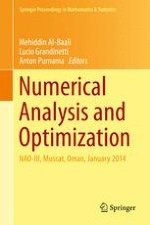Presenting the latest findings in the field of numerical analysis and optimization, this volume balances pure research with practical applications of the subject. Accompanied by detailed tables, figures, and examinations of useful software tools, this volume will equip the reader to perform detailed and layered analysis of complex datasets.
Many real-world complex problems can be formulated as optimization tasks. Such problems can be characterized as large scale, unconstrained, constrained, non-convex, non-differentiable, and discontinuous, and therefore require adequate computational methods, algorithms, and software tools. These same tools are often employed by researchers working in current IT hot topics such as big data, optimization and other complex numerical algorithms on the cloud, devising special techniques for supercomputing systems.
The list of topics covered include, but are not limited to: numerical analysis, numerical optimization, numerical linear algebra, numerical differential equations, optimal control, approximation theory, applied mathematics, algorithms and software developments, derivative free optimization methods and programming models. The volume also examines challenging applications to various types of computational optimization methods which usually occur in statistics, econometrics, finance, physics, medicine, biology, engineering and industrial sciences.
